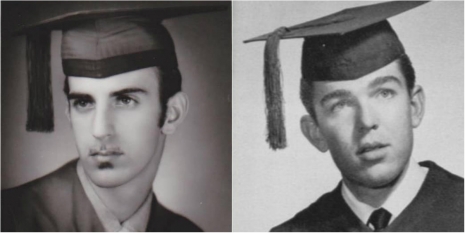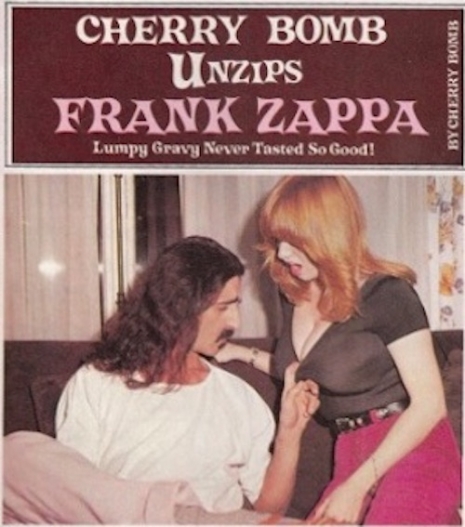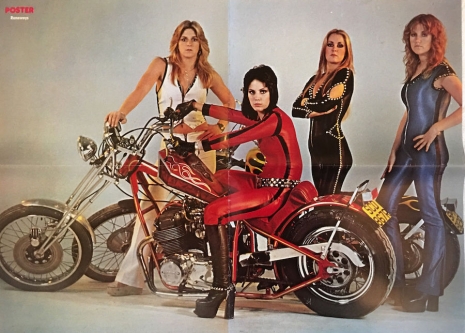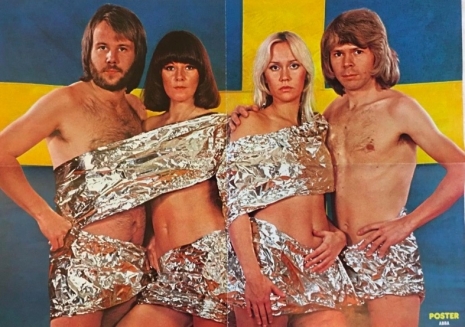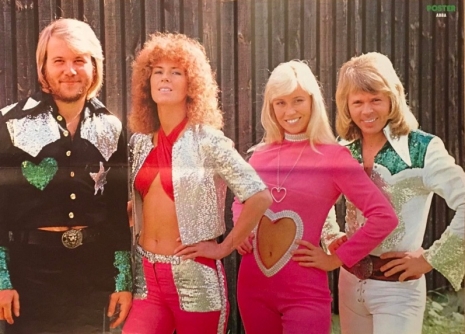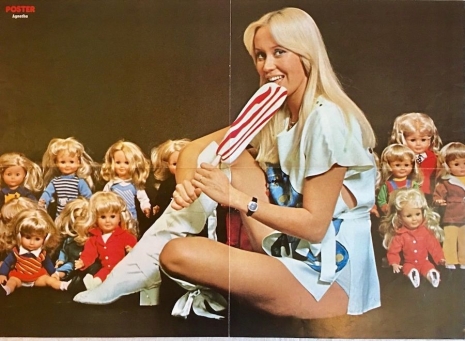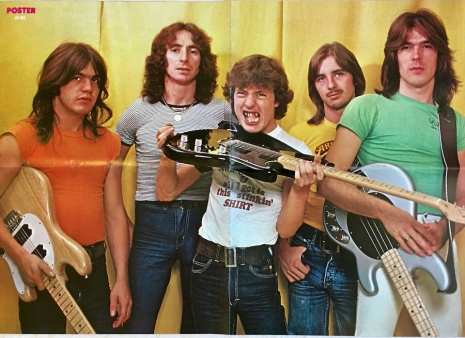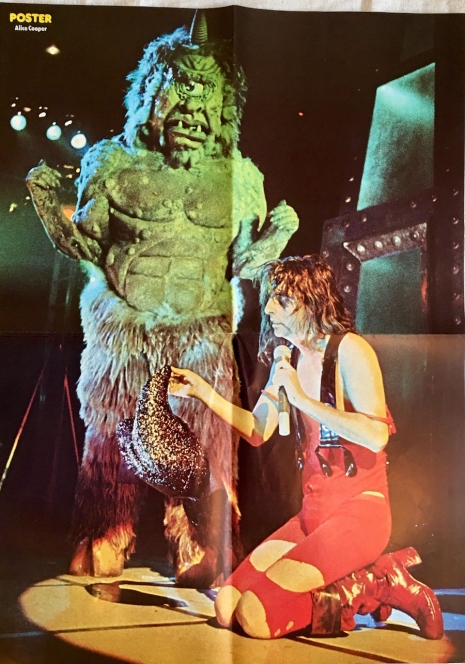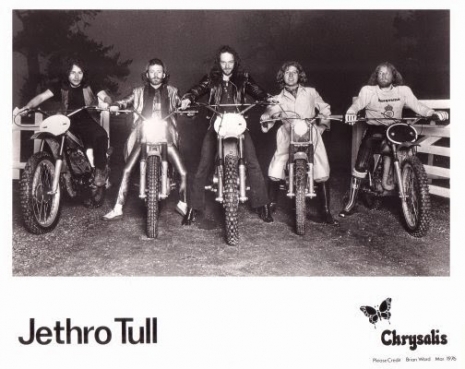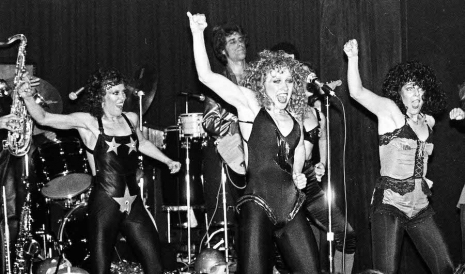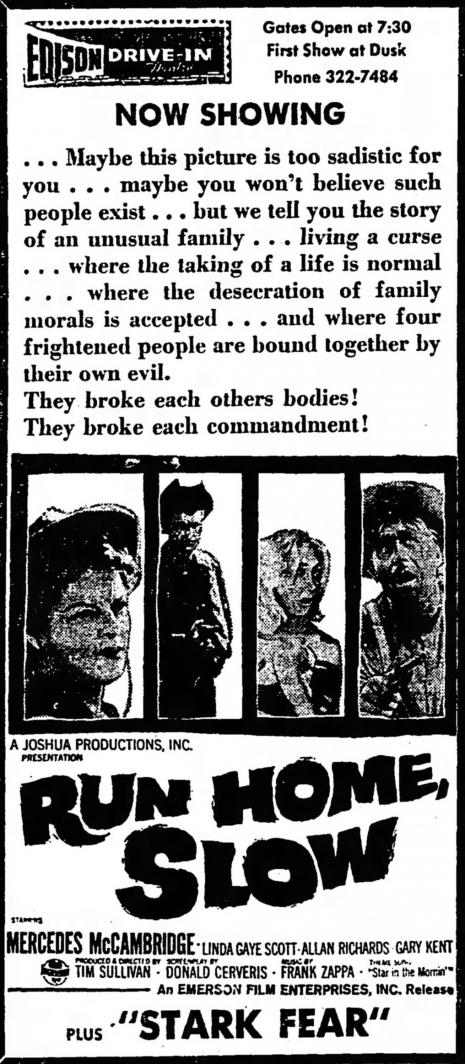
Schenkel’s illustration of Zappa for the back cover of ‘The Frank Zappa Songbook.’
” If I were, to sum up, his meaning to music and art in this century, it’s as someone who opened new doors by experimenting with so many different things, expanded the envelope, and brought other types of music into Rock.”
—a 2010 quote from artist Cal Schenkel on how he thought Frank Zappa should be remembered.
Future long-time collaborators Cal Schenkel and Frank Zappa first met each other in 1966 when Schenkel was nineteen and hitchhiking around Los Angeles. In a “Dear Hustler, I never thought it would happen to me” moment, Schenkel was picked up by a jeep full of girls and dropped off at a studio where Zappa was recording his first record, Freak Out! by the Mothers of Invention. According to Schenkel, his interaction with Zappa in 1966 was unremarkable, and by 1967, the budding artist was back in his hometown of Philadelphia. As you’re perhaps aware, Zappa was an accomplished artist in his own right—something I’ve written about here on Dangerous Minds previously. He also created early artwork and collages for The Mothers of Invention shows and artwork for their first album. In the midst of a six-month stint at the Garrick Theater in New York in 1967, the Mothers played two shows Tuesday through Friday and three shows on Saturday and Sunday. At some point, Frank decided it was time for him to turn over artwork duties to someone other than himself, and this is where Schenkel’s girlfriend at the time, Sandy Hurvitz, comes in. Hurvitz (aka Essra Mohawk) was then performing with the Mothers. When she heard Frank was looking for someone to become his “art engineer,” she immediately got Zappa and Cal together to look at Cal’s work. Zappa was into what he saw, and soon Schenkel, a self-taught artist, would be doing everything from creating artwork for Zappa’s musical projects to photographing the band, even living with the Zappas for a time. The two would work closely together, and often the artistic output would be based entirely on concepts initialized by Cal, then approved by Frank. Here, Schenkel gives some more insight into how he helped bring Frank’s “identities” to life:
“They were Frank’s identities, and he was in control of them, and I was really just satisfying these various concepts. I didn’t create his identities for him in terms of explicit concepts. But in terms of visuals, we worked off of each other. So it was a true give and take, with the understanding that he had the final say. It was very informal and open. It was important to him to have a complete approach to the packaging of himself and his music because he saw himself as a complete artist, from music to visuals.”
To say Schenkel’s work for Zappa helped perpetuate the myth and madness of Frank Zappa would be an understatement. For their first collaboration, and as the only employee of the Zappa art department, Frank had Cal create some artwork used for the Garrick Theater residency. He was also deeply involved in the theatrics for the grueling show schedule, which for Schenkel included filtering lights through melting plastic. Here’s a little more from Frank on the visual effects Cal helped create for the shows:
“We had visual effects that would snuff anything that anyone is doing today, but we were doing it in a 300-seat theatre. We would do all kinds of weird things in there, but you can only do it in a situation where everyone can see it.”
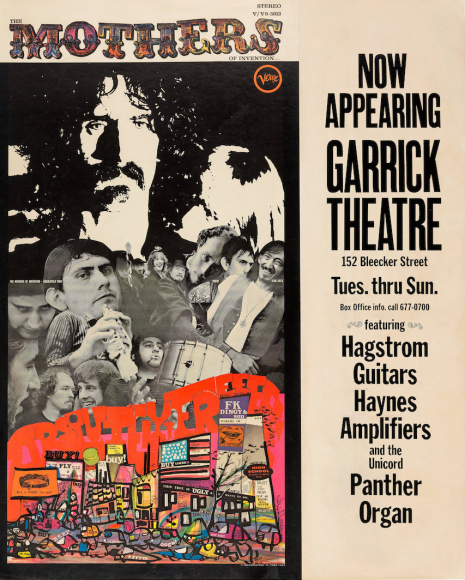
A poster for Zappa’s six-month stint at the Garrick Theater.
In addition to being Zappa’s go-to-guy for art, Schenkel was also a source of inspiration for Zappa’s jam “For Calvin (And His Next Two Hitchhikers).” Here, my friends, is The True Story of Calvin & His Hitchhikers as told by Cal Schenkel in 1984:
“My 39 Pontiac was in the shop & so I had borrowed a car from Frank. It was this 1959 white Mark VIIII Jaguar that used to belong to Captain Beefheart that Janet (Zappa collaborator and actress Janet Neville-Ferguson Hof), was using at the time. When it worked. You know, the one they slashed the seats in (but I don’t remember that). I just left Frank’s house & I’m stopped at the corner of Mulholland and Laurel Canyon Blvd, waiting for a red light to change when I notice these two hitchhikers, a hippie couple standing there waiting for a ride. The next thing I know, they are getting in the back of the car. I guess they must have thought I offered them a ride (I didn’t tell them to come into my car or motion them or anything—I wasn’t even thinking of it), so I ask them where they are going & they didn’t say ANYTHING! I drive down Laurel Canyon Blvd past the Log Cabin (the famed Log Cabin in Laurel Canyon, Hollywood owned by Zappa), past Harry Houdini’s, past the country store & into Hollywood. I get to the bottom of the hill, I was going to turn right. I kind of asked them, “look I’m turning right, do you want to get out here?” They didn’t say anything. They were just blank. I figured they were on acid or something. I just couldn’t communicate with them. I wasn’t sure what to do, so I just continued on to my destination. When I get there, I said, ‘OK, this is where I’m going. Good-bye!’ They just stayed in the car & didn’t get out. So I parked the car, got out, and went up to my studio and started to work. I was working on the album cover for Uncle Meat. This is in my studio that was a dentist’s office over a hotdog joint on Melrose. Every once in a while, I’d look out of the window to see if they were gone, but they were still sitting in the back seat of the car. An hour or two later, I looked out the window, and I noticed they were gone. I thought, ‘finally!’ Then shortly afterwards, I saw that they were back! They went to the supermarket for a loaf of bread and lunchmeat and started making sandwiches in the back of the car. They were eating their lunch! Then they left.”
Another fun fact about the Jaguar Cal was rolling around in: Zappa gifted the nifty automobile to Janet Neville-Ferguson Hof for her birthday. Janet would complain it was always in the “shop,” and the last time she drove it (directly from being repaired at a garage), it blew smoke for three miles and then starting shooting flames through a hole in the floor where the stick shift had once been. Janet and her gal-pal Lucy (Miss Lucy of the GTOs), put out the fire with a coat before pulling over in front of the Whiskey A Go Go, where the jaguar completely burst into flames. It was later taken by someone Janet noted to be a “friend” of Motorhead Sherwood to “fix,” never to be seen again. A few of Schenkel’s lesser-known illustrations of Frank and some comic panels drawn by Cal featuring Zappa follow.
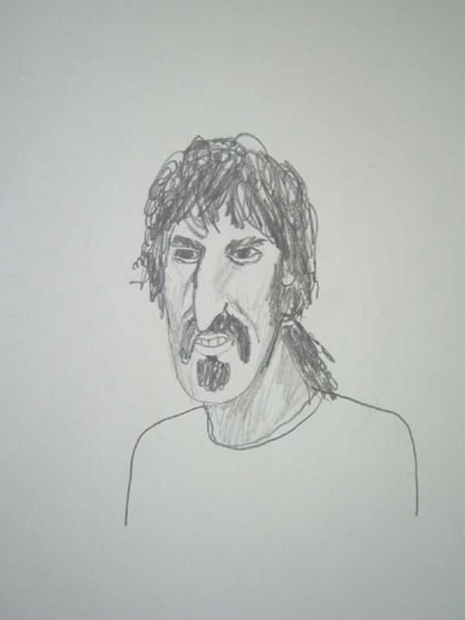
Here are images of eight original drawings of Frank Zappa by his longtime art director, Cal Schenkel, unused but intended for the ‘Uncle Meat’ album cover. Sold at an auction, the sketches were found by a former Warner Bros. art director, who, in 1976 while going through “job tickets” (envelopes containing everything to do with an album’s artwork), found them in one of the Zappa tickets for ‘Uncle Meat.’ The images were never used.

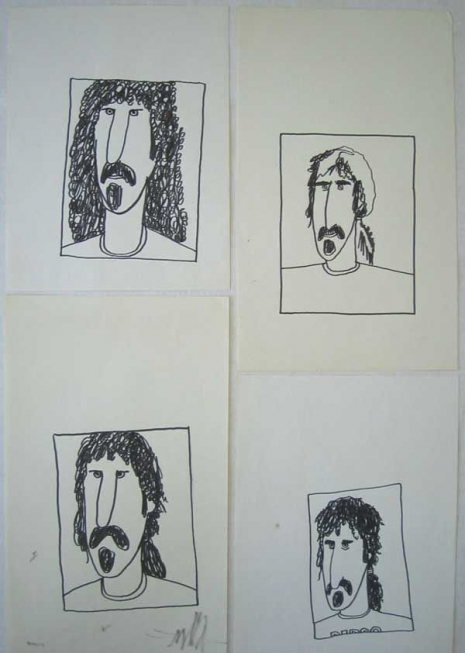
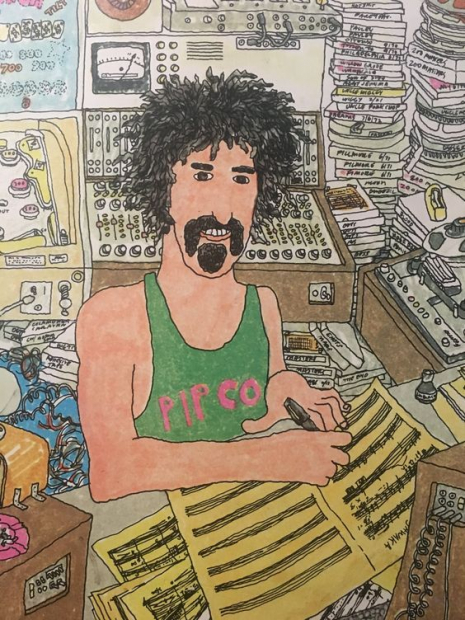
An illustration of Zappa by Schenkel for ‘The Frank Zappa Songbook’.
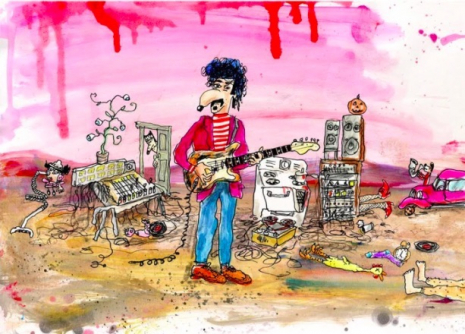
Much more Cal Schenkel, after the jump…






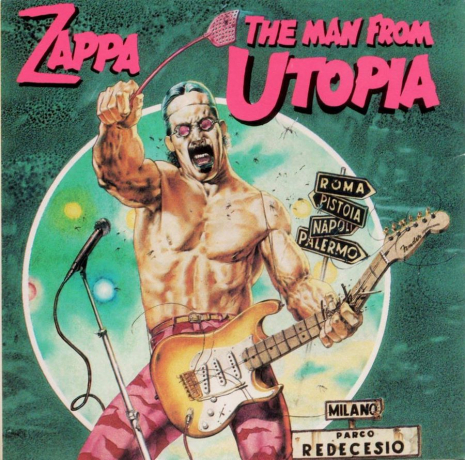
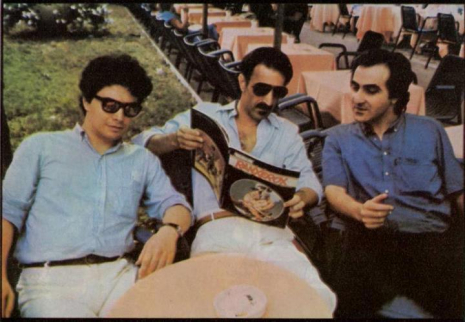
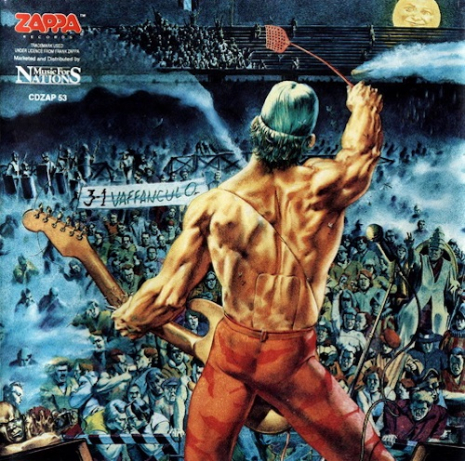 \
\
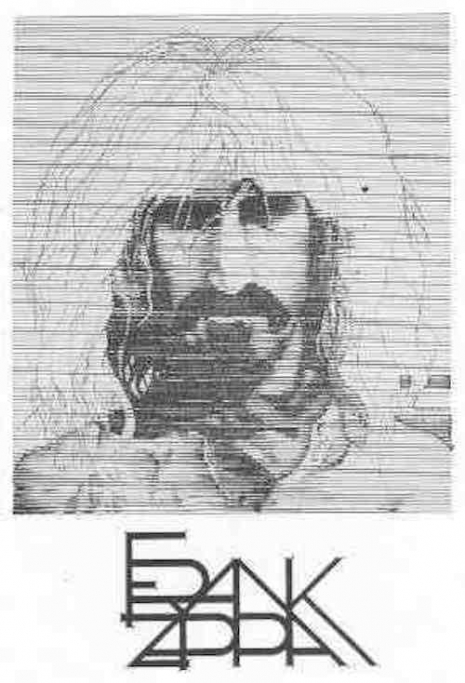
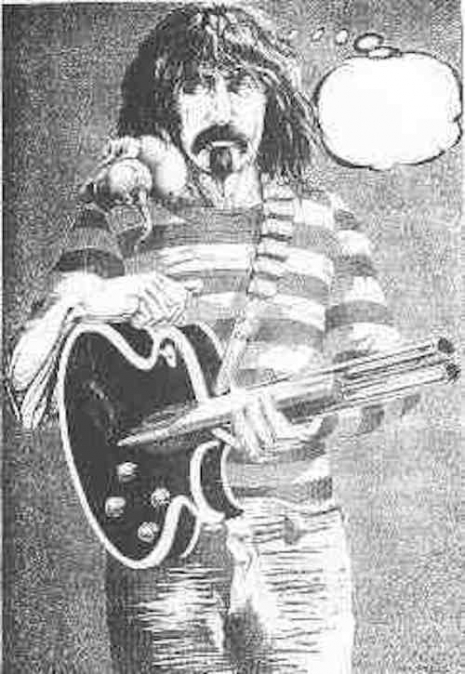
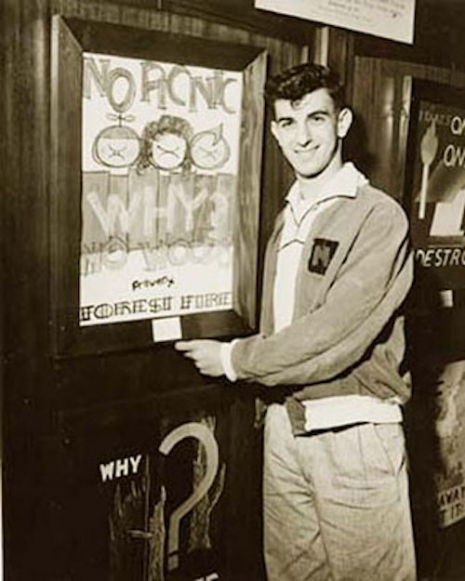


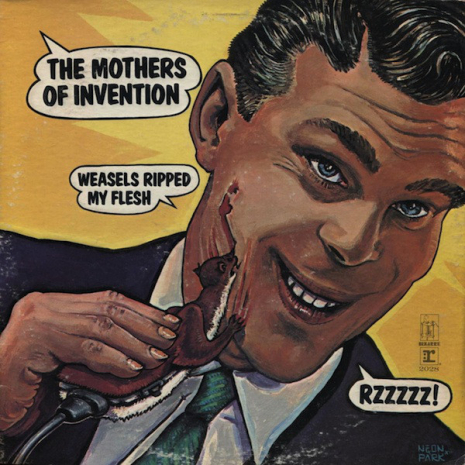
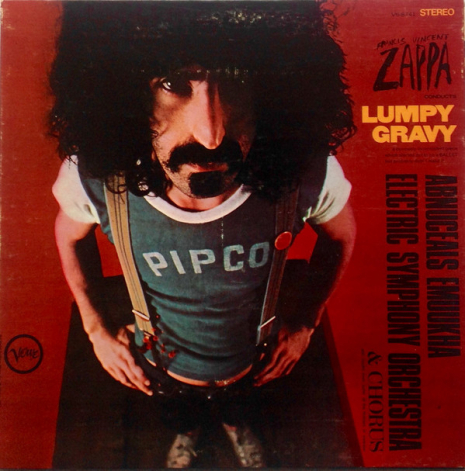
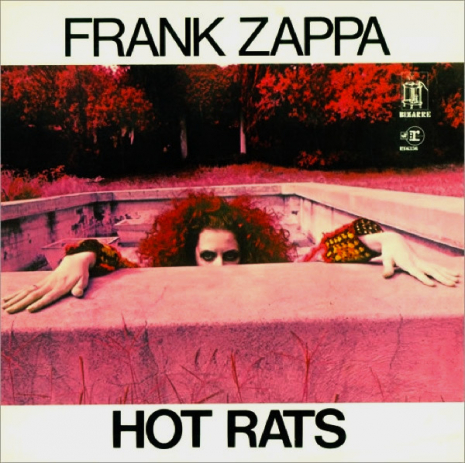
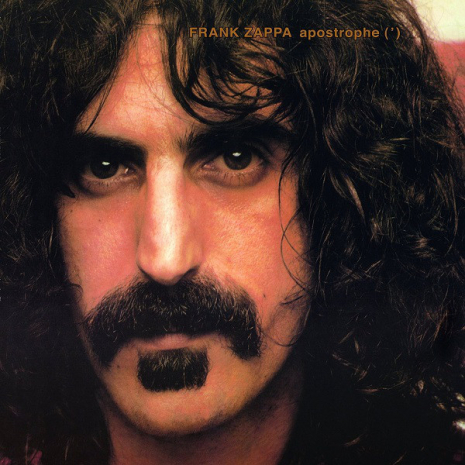
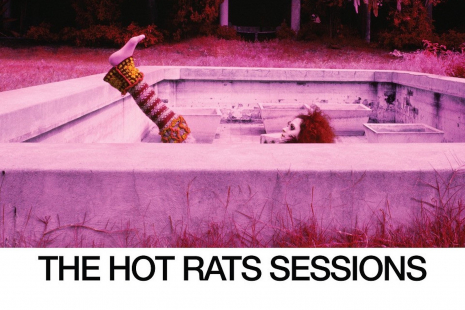
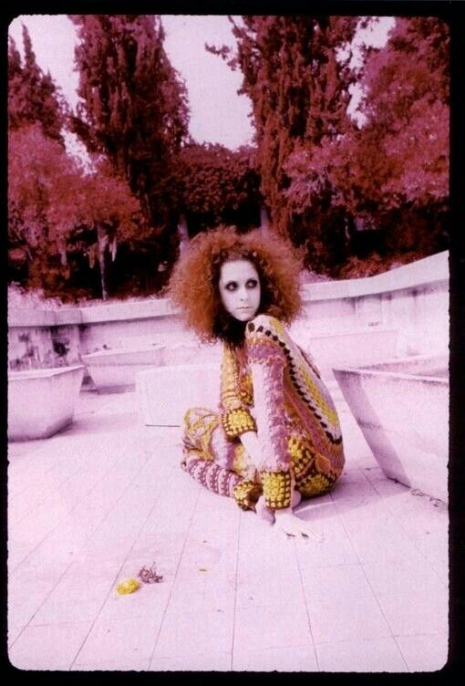
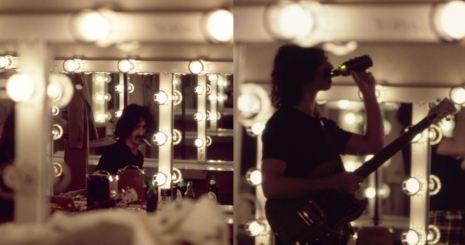


_465_306_int.jpg)
